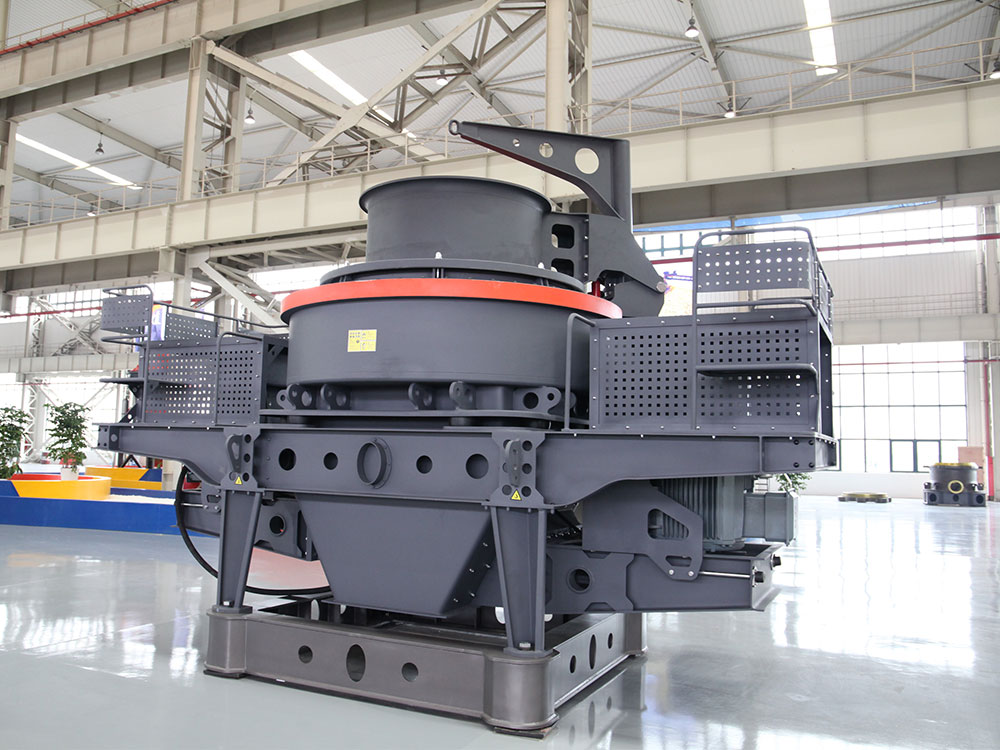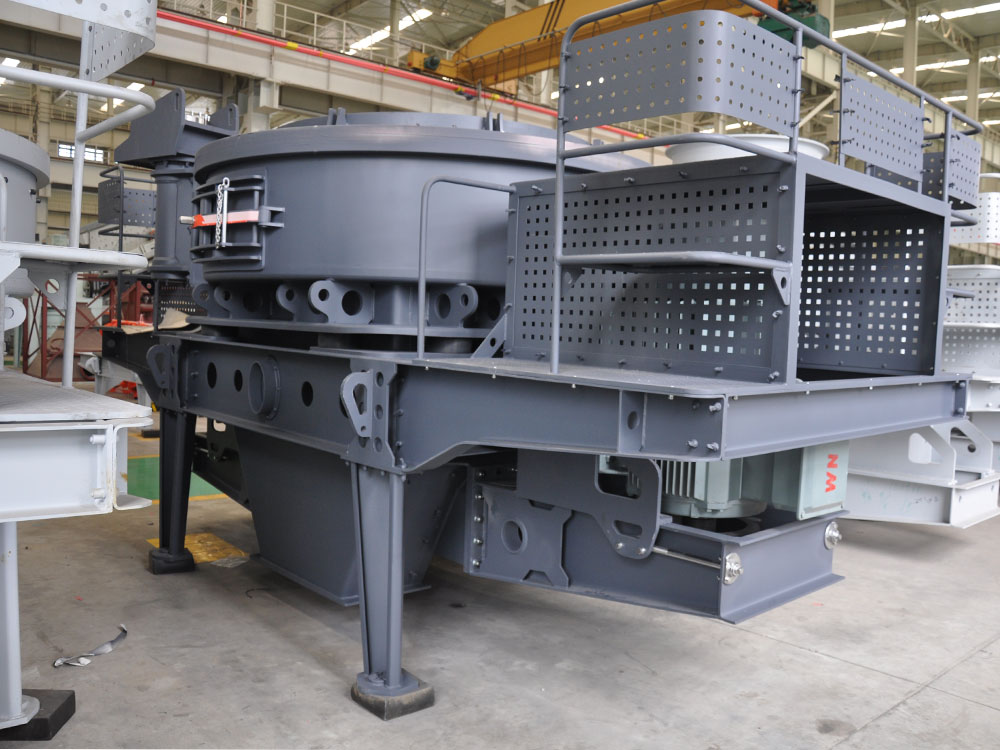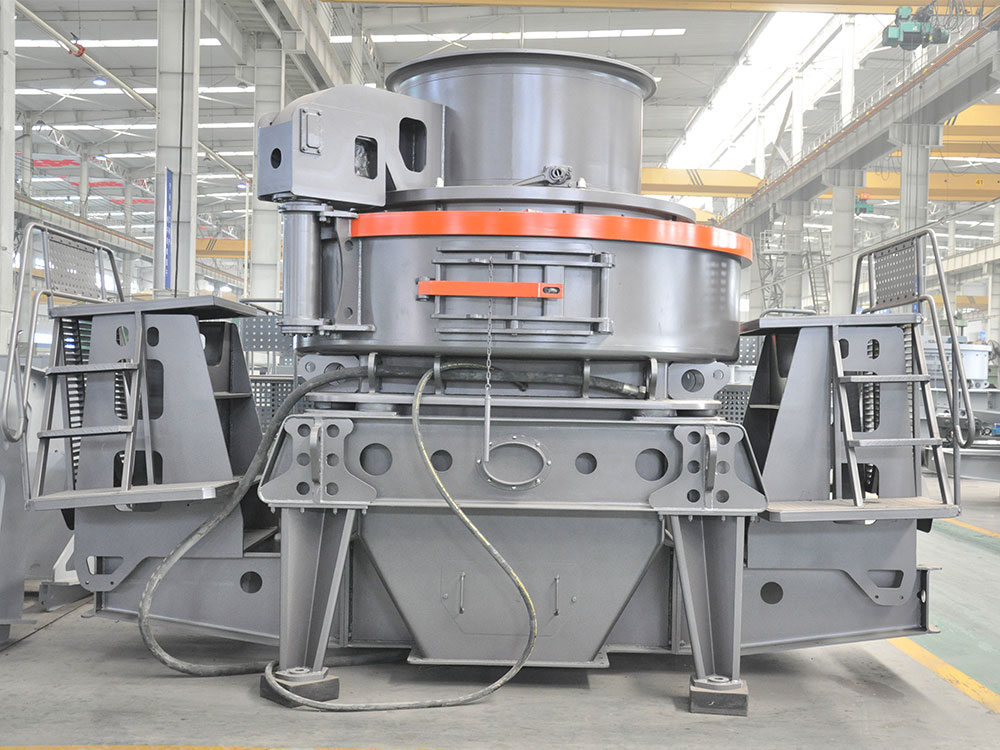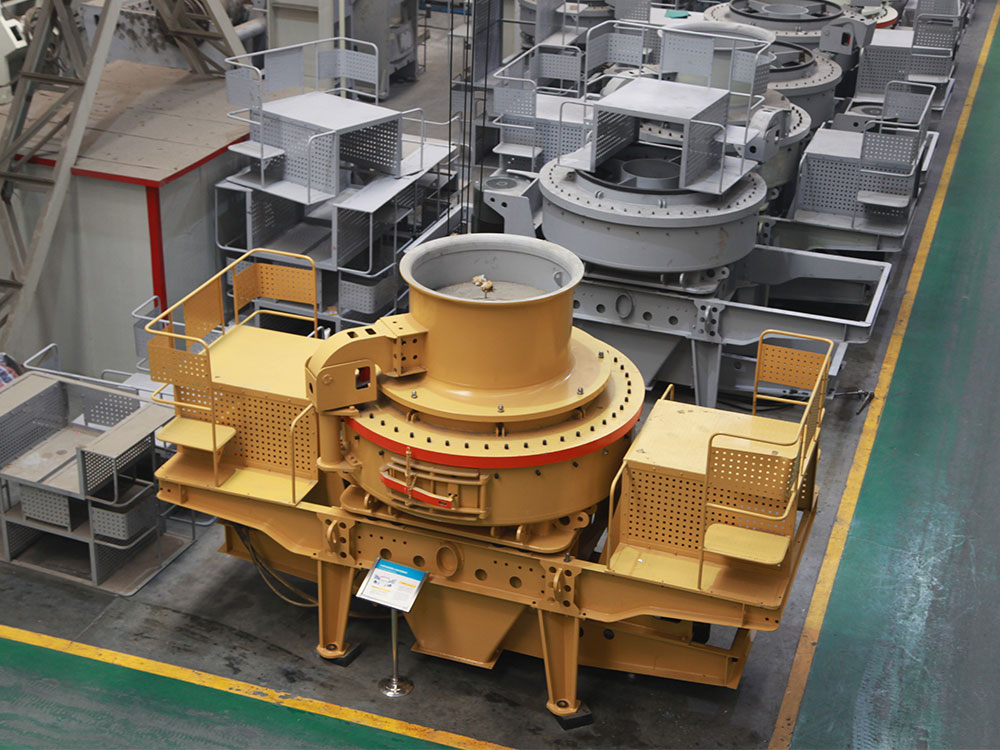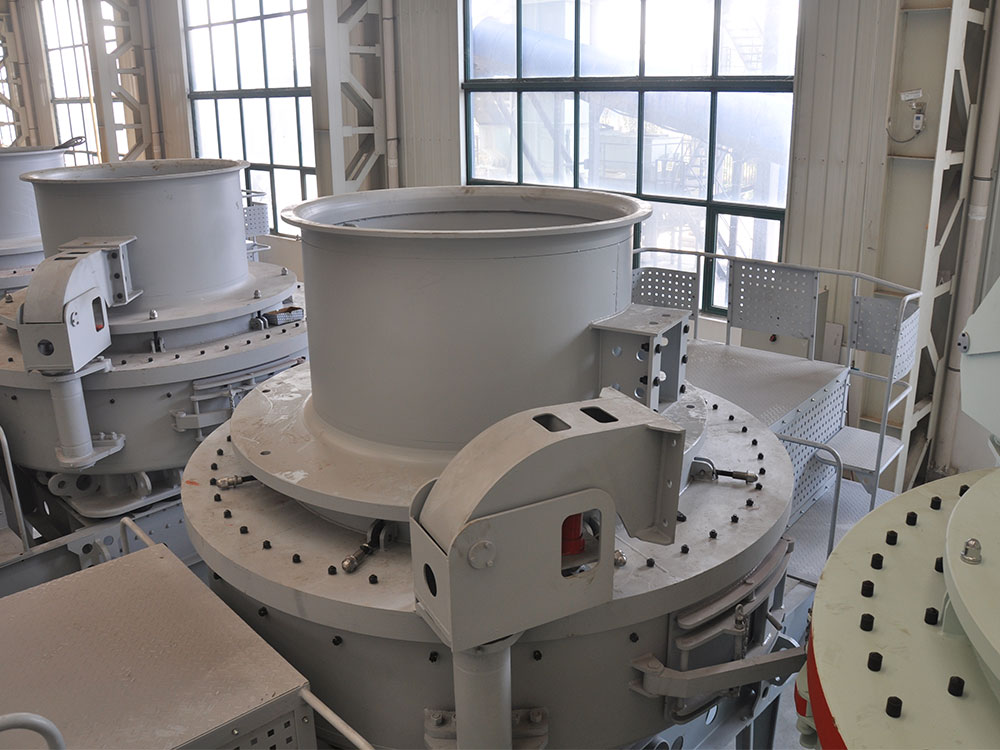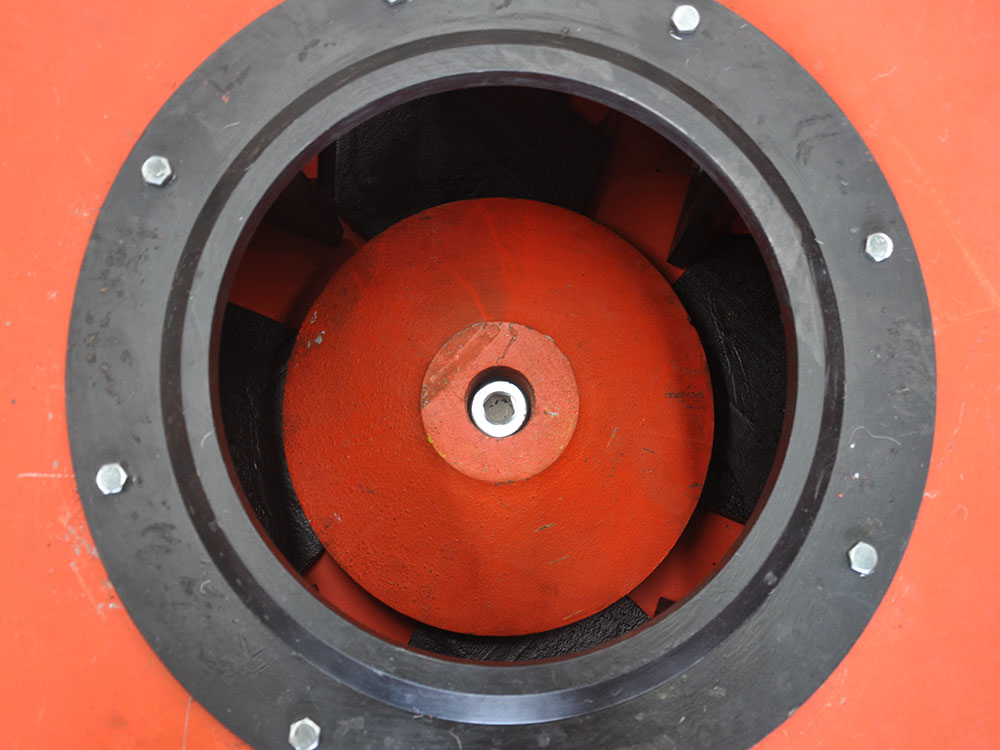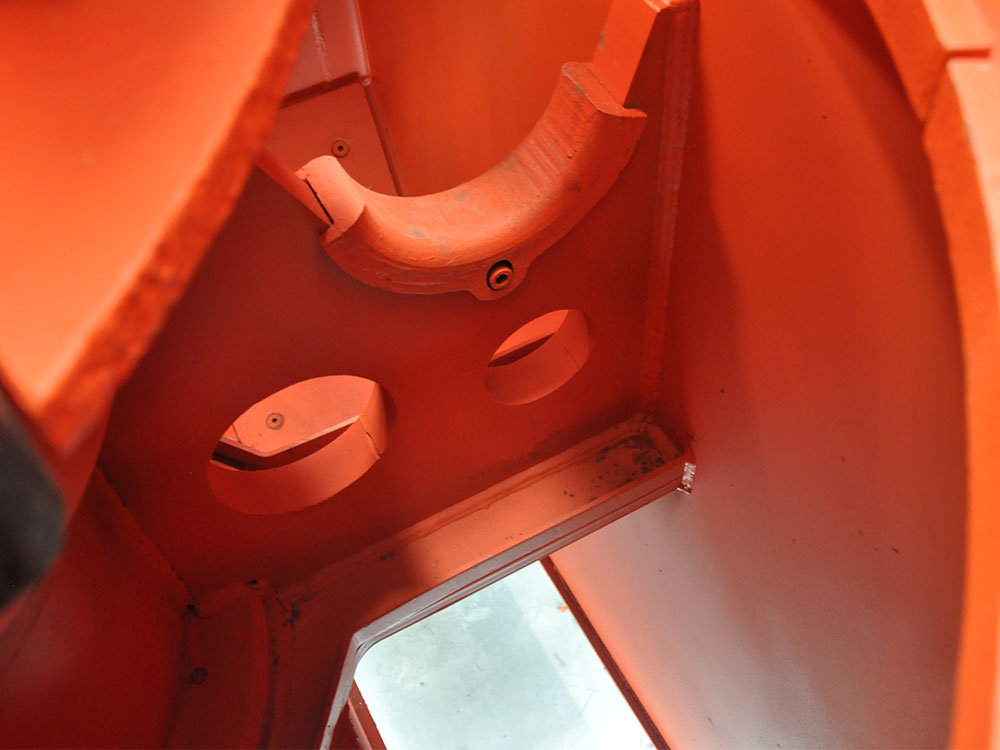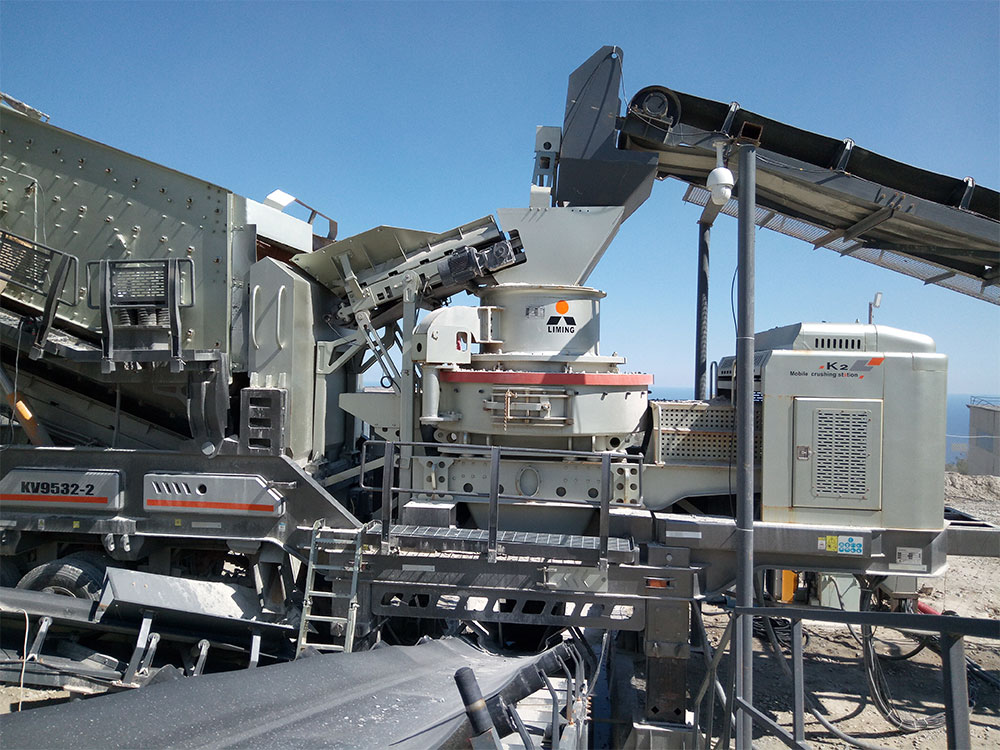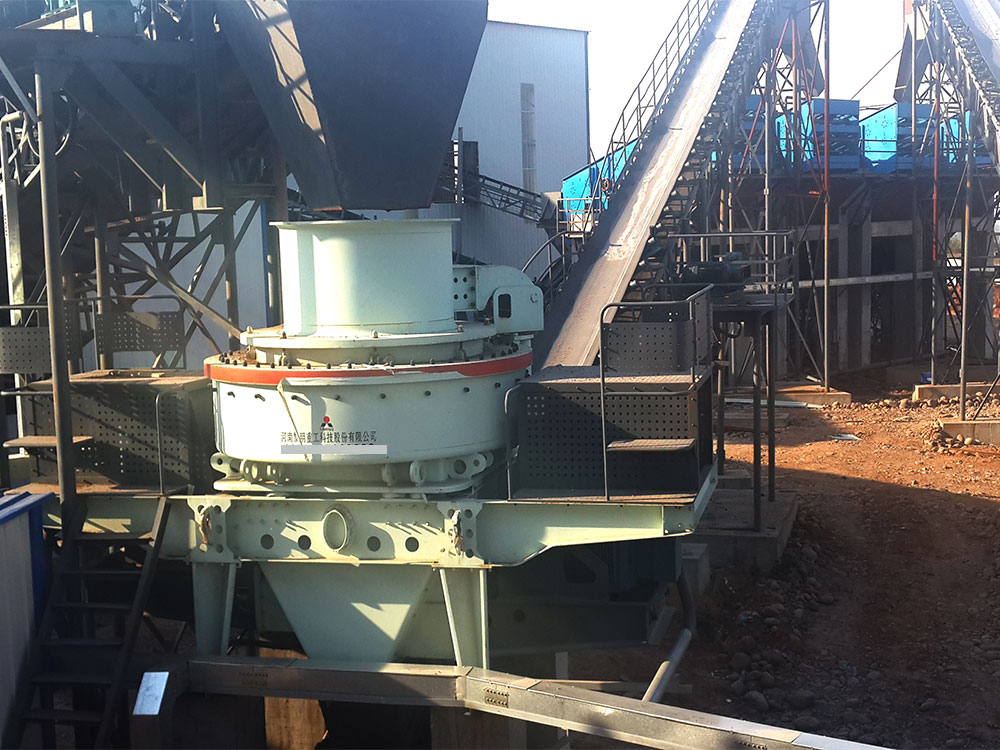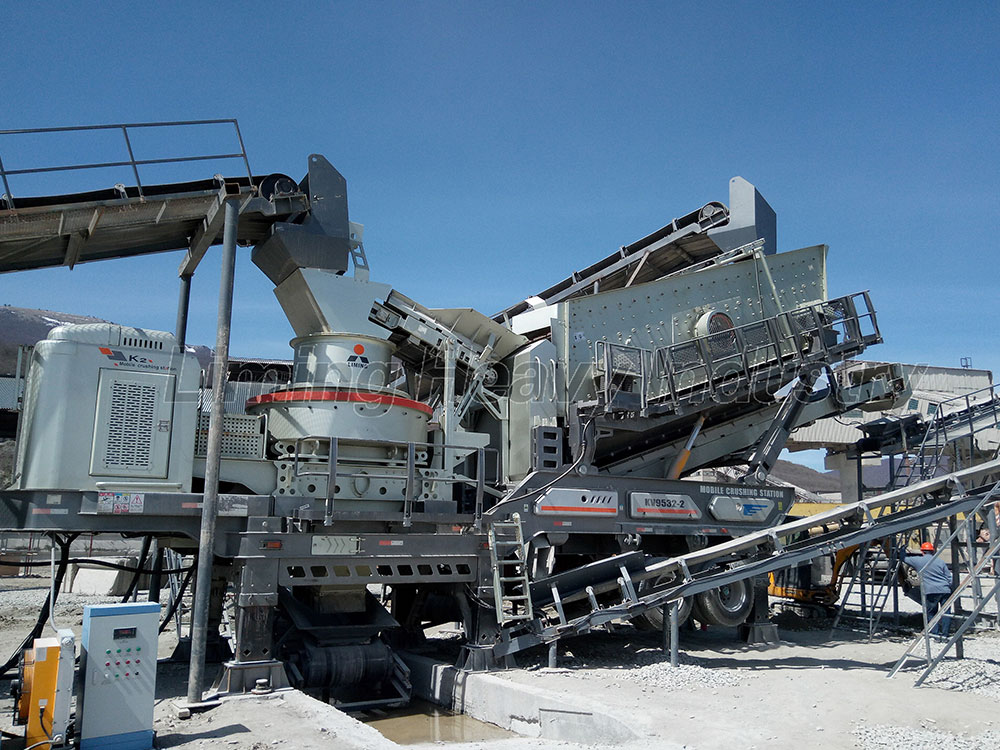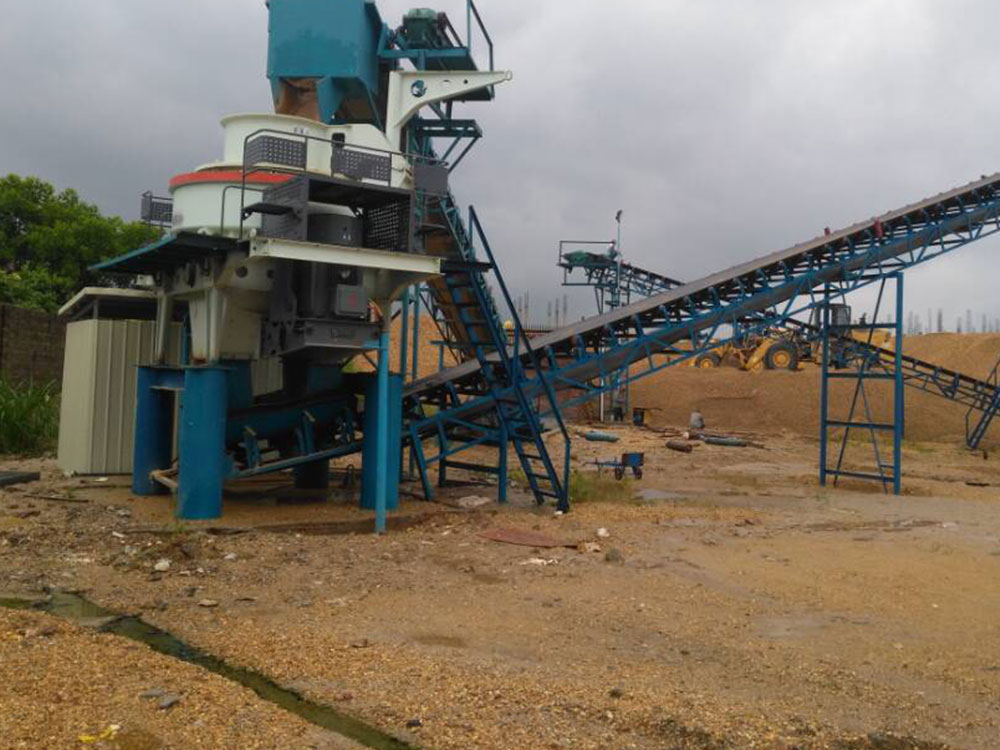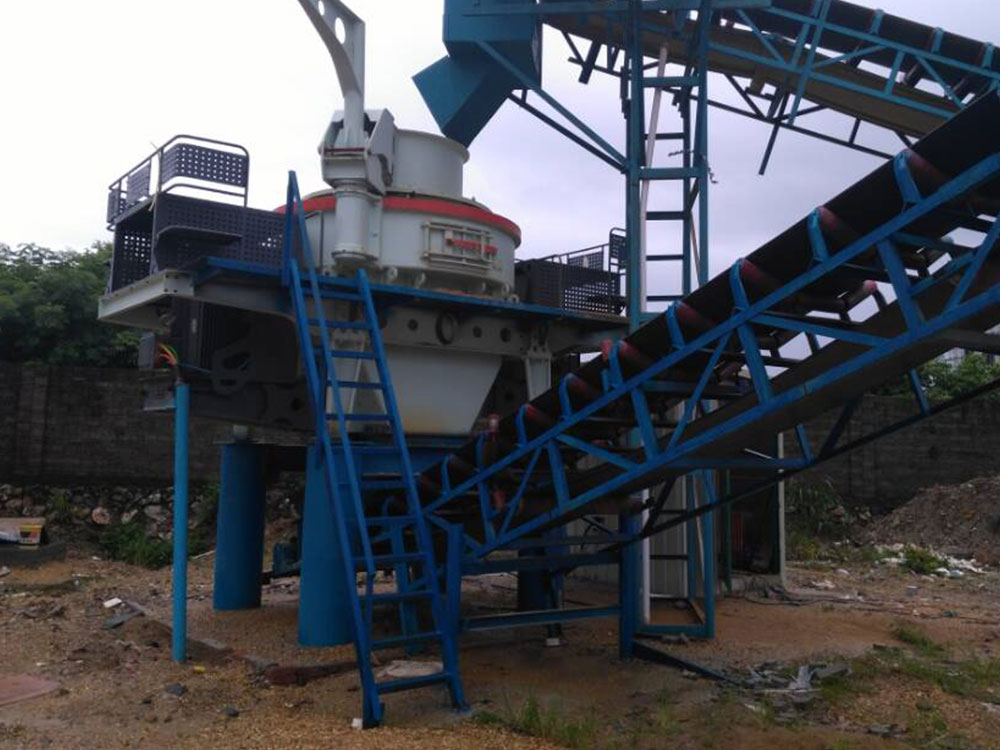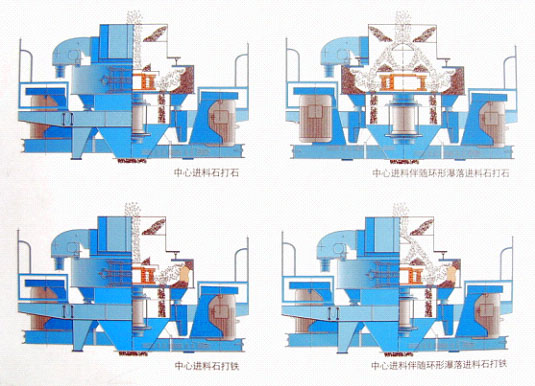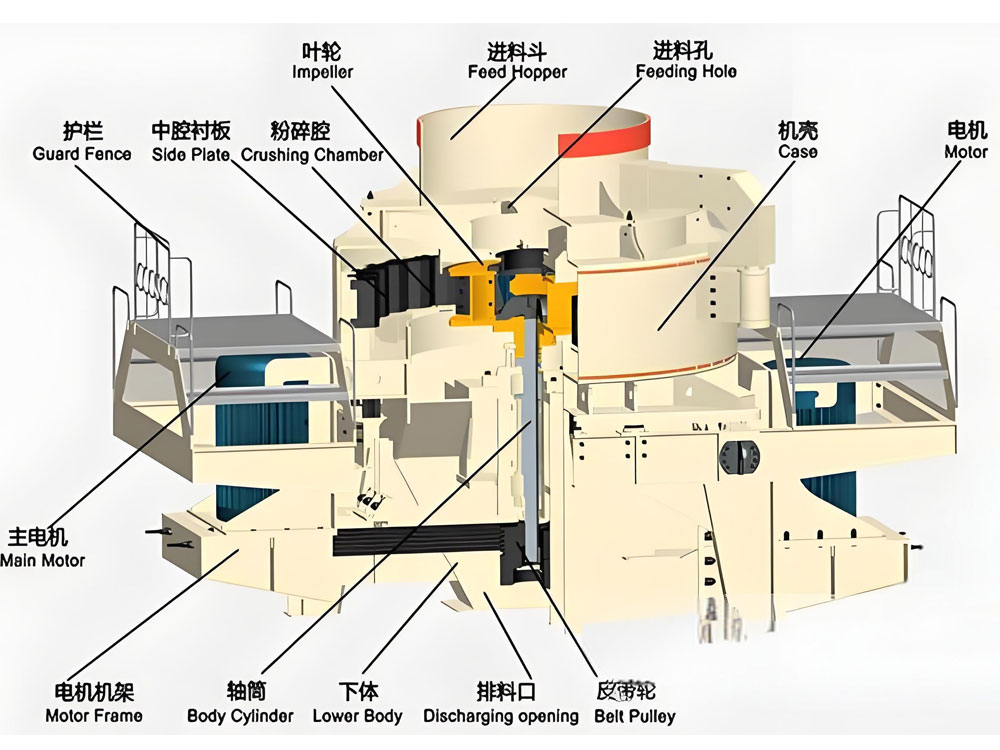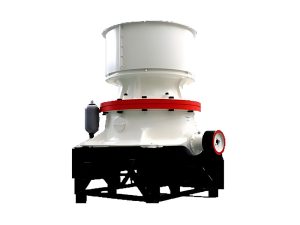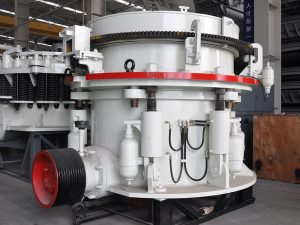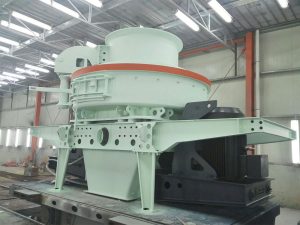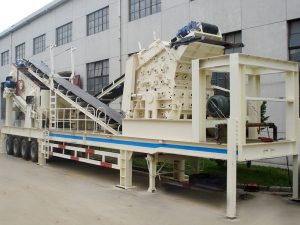Stationary CV216 Impact Crusher
The CV216 crushing plant has won wide acclaim for its advanced technical design and excellent performance. The equipment adopts a thin oil lubrication system and PLC automation control, this innovative design not only reduces the energy consumption by about 20% compared with the traditional equipment, but also achieves a significant increase in the crushing efficiency, the specific value is as high as 35%. This significant improvement in energy efficiency not only reduces production costs, but also lays a solid foundation for the sustainable development of the enterprise.
In terms of environmental protection, CV216 crushing plant also performs well. Its closed structure effectively reduces dust spillage and keeps the noise level well below the industry standard, which is fully in line with the requirements of green production. This design not only protects the health of operators, but also reduces the impact on the surrounding environment, showing the company's active commitment to social responsibility.
From the point of view of product characteristics, the finished sand produced by CV216 crushing plant is in cubic shape with continuous and stable grading, which is in full compliance with the standard of construction sand. This makes the plant not only suitable for the construction of high-grade highways, but also meets the high requirements of aggregate preparation for water conservancy projects. In addition, the CV216 can efficiently crush construction waste, slag and other recycled materials, with a separation rate of up to 98% of metal impurities, a feature that makes it an ideal choice for circular economy projects. In terms of equipment maintenance, the CV216 also demonstrates a user-friendly design. Equipped with a hydraulic lid opening device, the machine makes the replacement of wearing parts quick and easy, thus reducing maintenance time by 40%. This not only improves the operating efficiency of the equipment, but also reduces maintenance costs, bringing real economic benefits to users.
CV229 Impact Crusher Applications
Mining, construction waste recycling and aggregate production play a vital role in modern industry and urban construction. As the core tool in these fields, crushing equipment has a wide and far-reaching application.
In mining, crushing equipment is mainly used to crush limestone, granite, gabbro and other low and medium hardness ores. After crushing, these ores can meet the strict requirements for particle size in ore dressing, smelting and other subsequent processes. At the same time, the crushing equipment can also effectively deal with ores containing impurities and improve the utilisation of resources through fine crushing and screening. Whether it is an open pit mine or an underground mine, crushing equipment can play a key role in the coarse or medium crushing process, laying a solid foundation for the efficient utilisation of ores.
In the field of construction waste treatment, crushing equipment also plays a core role. With the acceleration of urbanisation, construction waste such as waste concrete and brickwork is increasing. Crushing equipment can crush these wastes into recycled aggregates for the production of new building materials. This not only helps to realise the green transformation of urban demolition projects, but also effectively reduces the pressure on the environment caused by waste landfill. The application of recycled aggregates not only reduces the exploitation of natural resources, but also promotes the development of circular economy.
The mobile operation advantage of crushing equipment is especially prominent in the construction of highways, railways and other infrastructure. These projects require large quantities of rock for roadbed filling, and crushing plants are able to crush hard rock into cubic particles that meet specifications. These particles have excellent stability and bearing capacity, which can significantly improve the stability of the roadbed. At the same time, the crushing plant can also handle hard rock with side length ≤500mm (compressive strength ≤350MPa), which meets the high requirements of high grade roads for aggregate specifications.
Crushing plants also play an important role in the construction of water conservancy hubs, hydropower stations and other large-scale projects. They are used in the production of sand and gravel aggregate to provide high-quality filler for engineering construction. In the chemical industry, the crushing equipment also performs well, capable of handling raw materials such as coke and gangue, providing filler with uniform particle size to meet the production demand.
Stationary CV216 Impact Crusher Advantages
High-efficiency Crushing and Size Control Capability Explained
The CV216 crusher stands out amongst many other crushing plants with its excellent high-efficiency crushing and size control capability. Its core lies in the synergy between the high-speed rotor and the well-designed impact plate. When the material enters the crushing chamber, it will first be impacted by the high-speed rotor hammers, and this initial impact crushing can quickly break down the large pieces of material into smaller fragments. Subsequently, these fragments will repeatedly collide with each other on the impact plate, and undergo a multi-stage crushing process until the ideal particle size is reached.
This impact crushing principle not only has high crushing efficiency, but also is especially suitable for the efficient processing of medium-hard materials, such as limestone and granite. In practical application, take coal gangue crushing as an example, CV216 single machine capacity can reach an amazing 300T/H, wide range of feed size, from 0-350mm materials can be easily dealt with, and the discharge size can be accurately controlled in the range of 0-13mm, which meets a wide range of production needs.
In order to achieve flexible control of the discharge size, CV216 equipment is designed with a variety of adjustment mechanisms. By adjusting the rotor speed, it can change the size of the impact force on the material in the crushing chamber, thus affecting the crushing effect. At the same time, the adjustment of the gap of the impact plate is also a key factor. By changing the size of the gap, the degree of crushing and particle size distribution of the material can be further controlled. It is worth mentioning that the CV216 is also equipped with an advanced hydraulic adjustment system that supports remote operation, making it possible to quickly adjust the gap even during operation, ensuring that the finished product has a uniform grain shape and low needle and flake content, which fully meets the needs of high-grade engineering aggregates.
Structural design and durability
The CV216 also excels in structural design. The rotor and hammers are made of high chrome alloy material, which has high impact resistance and wear resistance, making the metal utilisation rate of the hammers as high as 45%-48%, which greatly reduces the replacement frequency of wearing parts. Compared with the traditional hammer crusher, the life span of the plate hammer of CV216 is extended by more than 30%, which significantly reduces the maintenance cost.
In addition, the whole machine adopts keyless connection design, which makes the structure more compact and rigid, and covers a small area for easy installation and transport. Major components such as the impact plate and rotor adopt modular design, which supports quick disassembly and replacement, further reducing downtime and improving production efficiency.
Energy Saving, Environmental Protection and Economic Advantages
In terms of energy saving and environmental protection, the CV216 also performs well. Its impact crushing principle reduces energy consumption by 20-30% compared to extrusion equipment, and it eliminates the need for a bottom screen plate, reducing the risk of clogging. Combined with its high processing efficiency, the unit cost of energy consumption is significantly reduced, bringing considerable economic benefits to users.
The initial investment and running cost of the equipment are balanced, and the comprehensive cost performance is higher than that of similar products. Meanwhile, the CV216 adopts a closed structure design during the crushing process and is equipped with a dust suppression device, effectively reducing dust pollution. In addition, by optimising the balance of the rotor, it reduces noise pollution and fully meets the requirements of industrial environmental protection standards.
Wide Adaptability and Special Scenario Applications
The wide adaptability of the CV216 is also a highlight. It can handle materials with high moisture content, such as gangue and lump coal. To cope with the bonding problem of these materials, the feed chute of the CV216 is equipped with a heating device to ensure the stability of continuous operation. In addition, it is also suitable for a variety of medium-hard materials such as iron ore, sandstone, gypsum, etc. It can even be extended to the field of construction waste recycling, which provides strong support for the recycling of resources.
By adjusting the equipment parameters, the CV216 can be adapted to the needs of different production lines, whether coarse, medium or fine crushing, to meet diversified production layouts and process requirements. This flexibility and adaptability makes CV216 one of the most highly regarded and efficient crushing equipment in the market.
Stationary CV216 Impact Crusher Working Principle
The working principle of CV216 Impact Crusher is based on the design logic of combining the self-impact crushing of ‘stone hitting stone’ and the multi-stage crushing of centrifugal eddy current. The material enters through the hopper, and is divided into two streams by the distributor: one stream enters the centre of the high-speed rotating impeller, and is accelerated to a speed of 60-70m/s under the action of centrifugal force of the impeller, and then thrown out; the other stream naturally falls down along the periphery of the distributor to form a free material flow, and the high-speed material projected out of the impeller and the free-falling material collide violently in the upper part of the crushing chamber, and the first crushing is completed. The first crushing is completed. This process makes full use of the kinetic energy of the material into crushing energy and reduces the direct wear and tear of metal parts. After the collision, the material enters the vortex crushing chamber and forms a vortex driven by the kinetic energy of the airflow. The material is bounced to the top and then deflected to move downward, collide with the subsequent materials again, and at the same time, the impeller continues to project the impact of the material to achieve multiple (usually ≥ 3 times) impact, friction, and grinding, crushing process, fine particles in the inner wall of the cavity to form a dense material lining layer, the subsequent material is mainly collided with the lining layer and not metal parts, significantly reducing the wear rate of the equipment and extending the service life. The crushed material is discharged through the bottom discharge port, and the particle size of the finished product is controlled by the external screening system. Particles that do not meet the standard are returned to the crushing chamber for reprocessing through the closed-circuit system, and the mesh size can be met by 3 times of recycling.
Stationary CV216 Impact Crusher Technical Parameters
| Max. feed size | 50.0 mm | Weight | 9,500 kg |
| Power | 110 kW | Length | 4.35 m |
| Width | 2.16 m | Height | 2.55 m |


